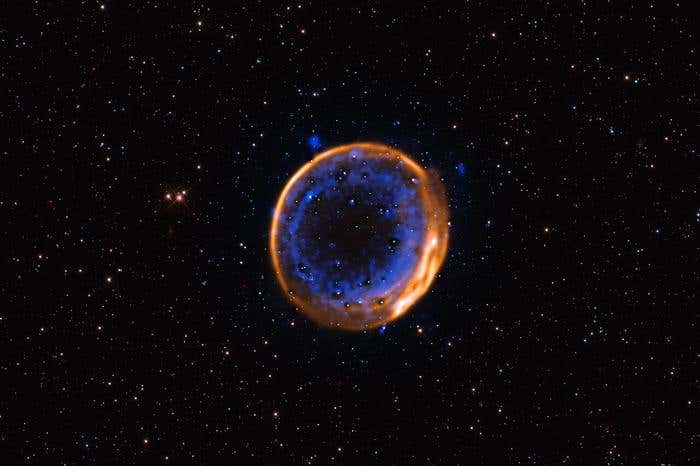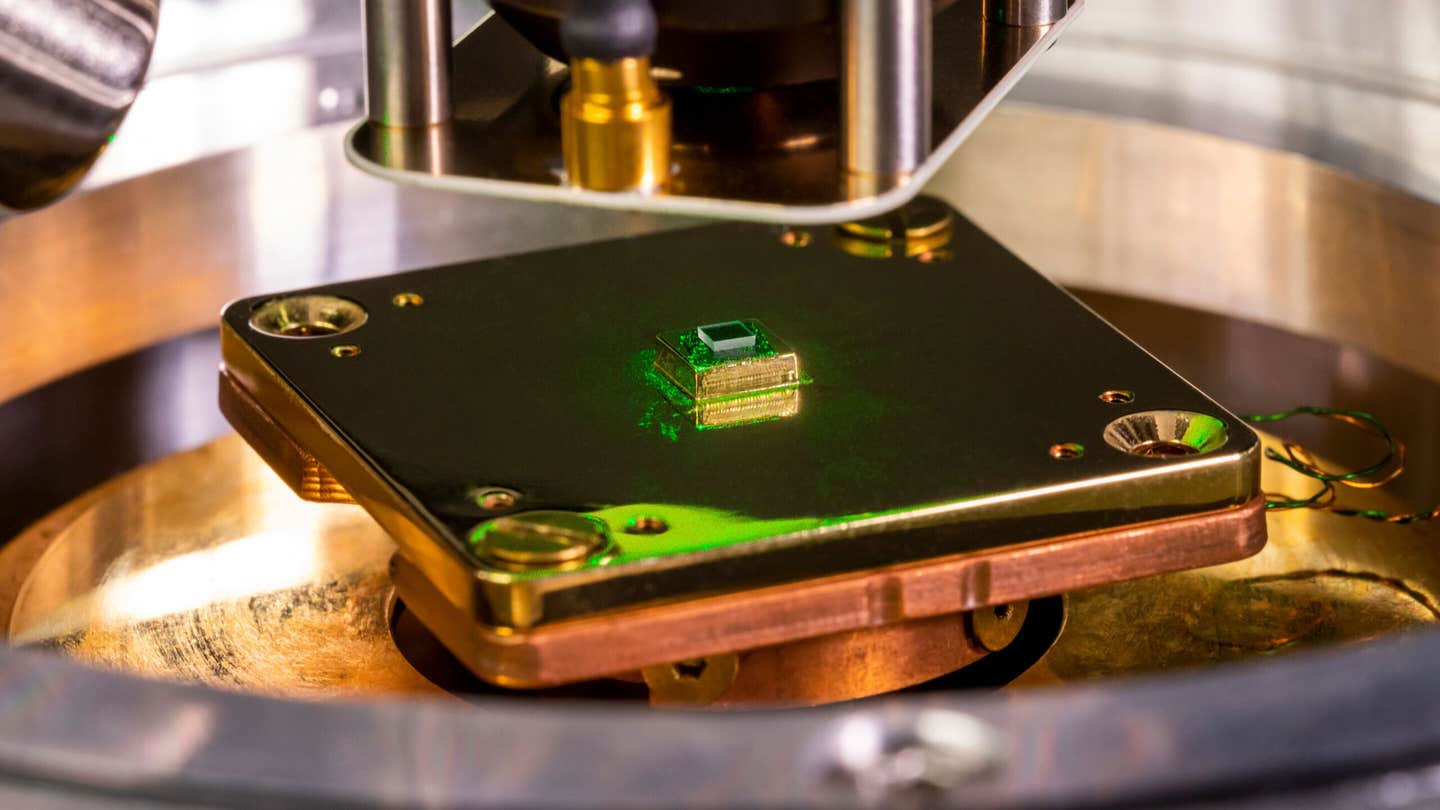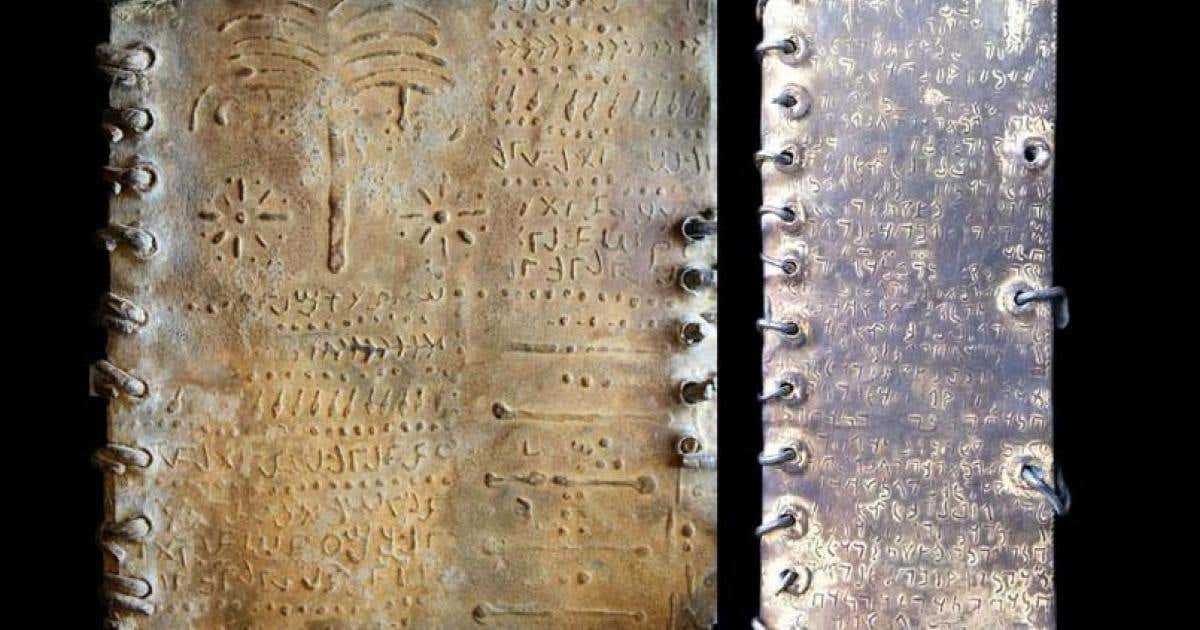Astronomers find first visual proof of a star exploding twice
For the first time, astronomers have captured visual proof that some stars explode twice before dying, revealing secrets of cosmic death.

Astronomers find the first visual proof of a double detonation supernova, changing how we understand exploding stars. (CREDIT: ESO/P. Das et al. Background stars (Hubble): K. Noll et al.)
Stars often die with a final burst of beauty. For the first time, astronomers have captured visual proof that a star can explode not once, but twice before fading forever.
Using the European Southern Observatory’s Very Large Telescope in Chile, a team studied the supernova remnant SNR 0509-67.5. What they found is changing what scientists know about these massive cosmic events.
Priyam Das, a PhD student at the University of New South Wales Canberra, led this research. The findings were published in Nature Astronomy and offer the first visual evidence of a “double detonation” in a white dwarf star.
The Power of White Dwarf Supernovae
Not all supernovae come from giant stars. Some come from white dwarfs. These are dense, burnt-out cores left after stars like our Sun run out of fuel. White dwarfs can trigger Type Ia supernovae, known for their steady brightness.
“The explosions of white dwarfs play a crucial role in astronomy,” says Das. Type Ia supernovae help measure distances in space. They are like cosmic measuring tapes, used to discover that the Universe is expanding faster over time. This discovery even won the 2011 Physics Nobel Prize.
These explosions also create most of the iron on Earth. That means the iron in your blood came from one of these star deaths.
Despite their importance, scientists have long puzzled over how these explosions start. The leading theory said a white dwarf pulls material from a companion star. When it grows heavy enough, it explodes in one huge blast.
But this theory could not explain every supernova observed. Astronomers wondered if some explosions happen before the white dwarf reaches its critical mass. Recent studies hinted that a two-step detonation could occur instead.
Related Stories
Uncovering the Double Detonation
Now, astronomers have confirmed this idea. Their research reveals that some Type Ia supernovae explode in two blasts. First, the white dwarf gathers helium from its companion star. This forms a blanket of helium around it. When this layer becomes unstable, it ignites in a first detonation. That sends a shockwave into the star’s carbon-oxygen core. The shock triggers a second, even bigger explosion that tears the star apart.
Ivo Seitenzahl led the observations and was at Germany’s Heidelberg Institute for Theoretical Studies during the research. He explains that the findings show white dwarfs can explode before reaching their “Chandrasekhar limit,” the mass once thought necessary for a Type Ia supernova.
This breakthrough came from studying calcium patterns in the supernova remnant. Using the Multi Unit Spectroscopic Explorer (MUSE) instrument, astronomers detected two shells of calcium in SNR 0509-67.5. This double shell is the fingerprint of a double detonation.
Scientists had predicted these two calcium layers. One forms from the helium blast, and the other forms deeper in the star’s core during the second explosion. Seeing both layers is direct proof of this two-step process.
What Simulations Reveal
Simulations had long suggested this could happen. In a double detonation, the helium layer burns first, creating elements like sulfur and calcium. The inner carbon-oxygen core then explodes, producing heavier elements such as iron and nickel.
In the core, the density determines which elements form. At very high densities, iron dominates. At slightly lower densities, elements like calcium become more common. If the density is too low, only lighter elements like oxygen or neon are produced.
The helium shell, with its lower density, also produces a range of elements. Heavy elements like nickel are made closer to the star’s surface, while lighter ones like helium remain in the outermost layers.
Explosion models predict that calcium should appear in two separate layers. This is exactly what was seen in the new observations. Between these two calcium shells are other elements such as sulfur and silicon.
This double shell structure was captured in SNR 0509-67.5 after about 29 hours of telescope observations. It is the clearest sign yet of the double detonation mechanism at work.
Why This Matters for Astronomy
These results are important because they solve a mystery about Type Ia supernovae. Their consistent brightness allows astronomers to use them to measure vast distances. But if scientists do not fully understand how they explode, their measurements could be off.
The new findings also challenge older ideas that all Type Ia supernovae come from white dwarfs reaching the same mass limit before exploding. Instead, some may explode at lower masses through this double-detonation mechanism. This explains differences seen in supernovae brightness and helps refine models of the Universe’s expansion.
There have been hints of double detonations before. High velocity features in supernova spectra suggested distinct layers of elements formed at different times. But these features were not enough to prove the theory on their own.
Now, this spatially resolved image of calcium layers offers the proof astronomers needed.
The Beauty of Exploding Stars
For Das, the discovery is more than just data. “This tangible evidence of a double-detonation not only contributes towards solving a long-standing mystery, but also offers a visual spectacle,” he says. The double blast creates a “beautifully layered structure,” revealing secrets of cosmic death in bright detail.
Seeing how stars die teaches us how the Universe evolves. It shows where the elements in our bodies come from. And it proves that even in death, stars give life to everything around them.
As telescopes become more powerful, astronomers hope to uncover even more about how stars live and die. For now, the double detonation discovery has given science a new way to see the cosmos.
Note: The article above provided above by The Brighter Side of News.
Like these kind of feel good stories? Get The Brighter Side of News' newsletter.



